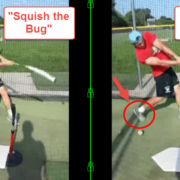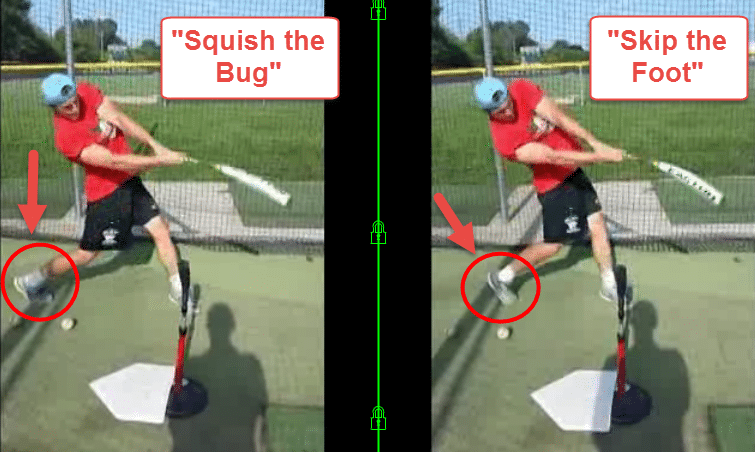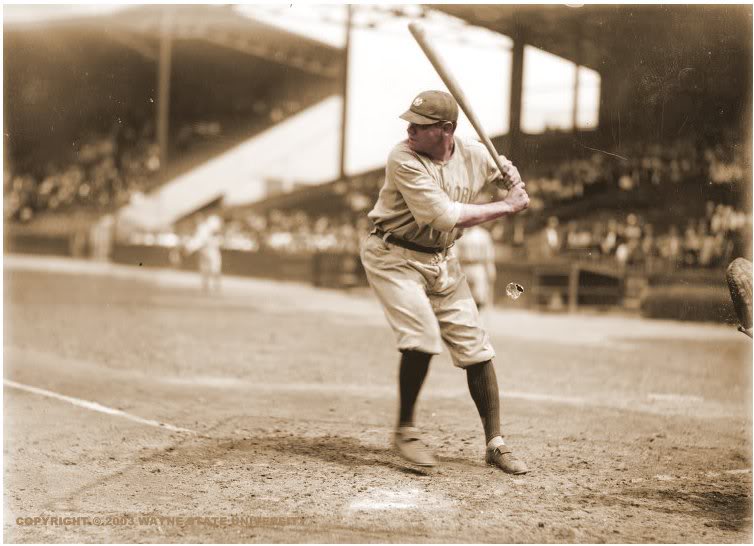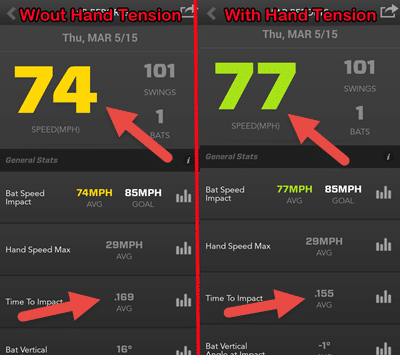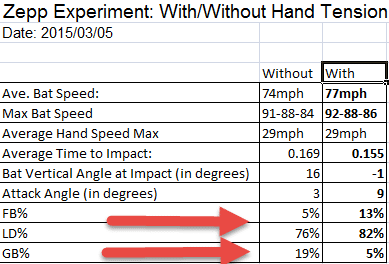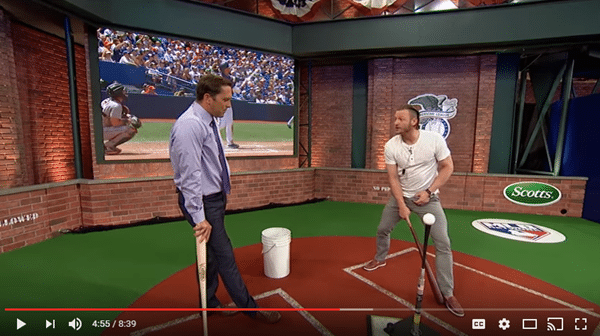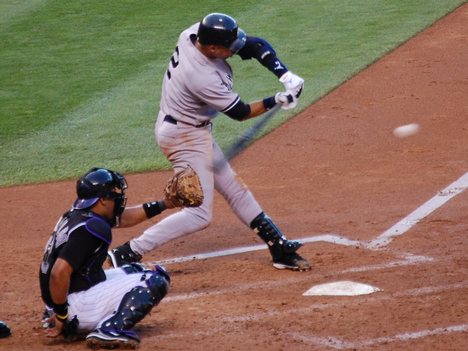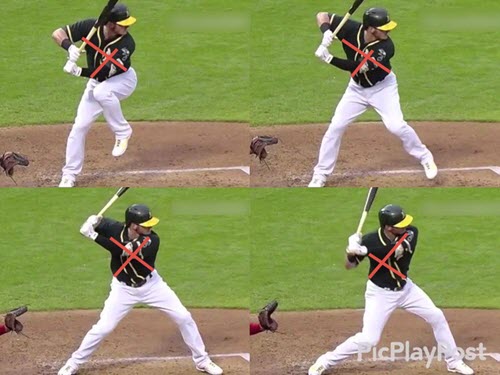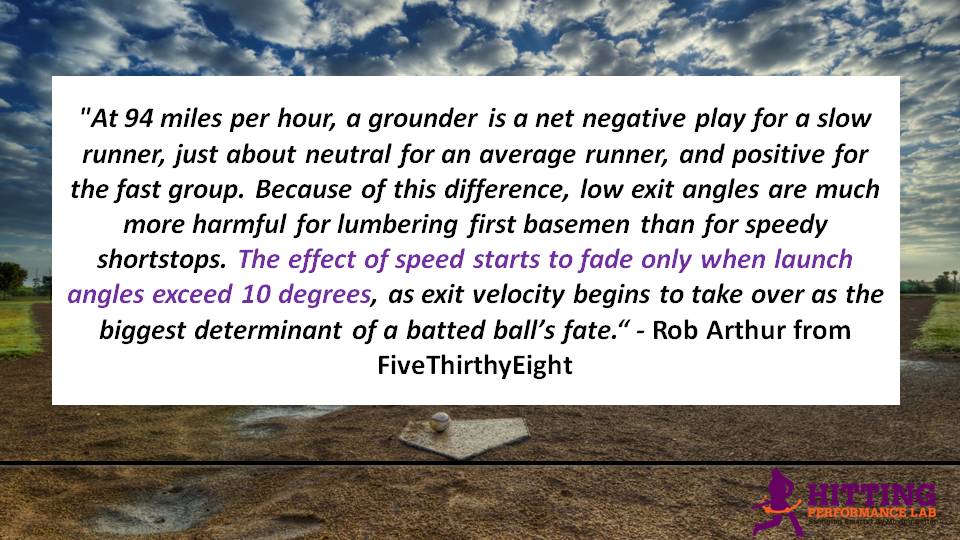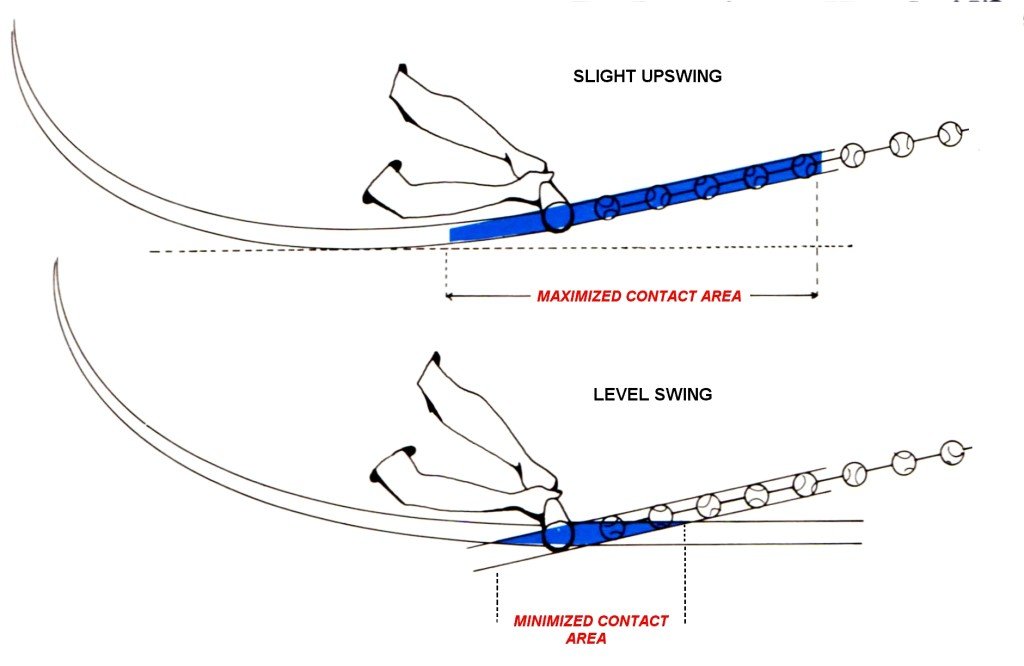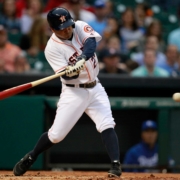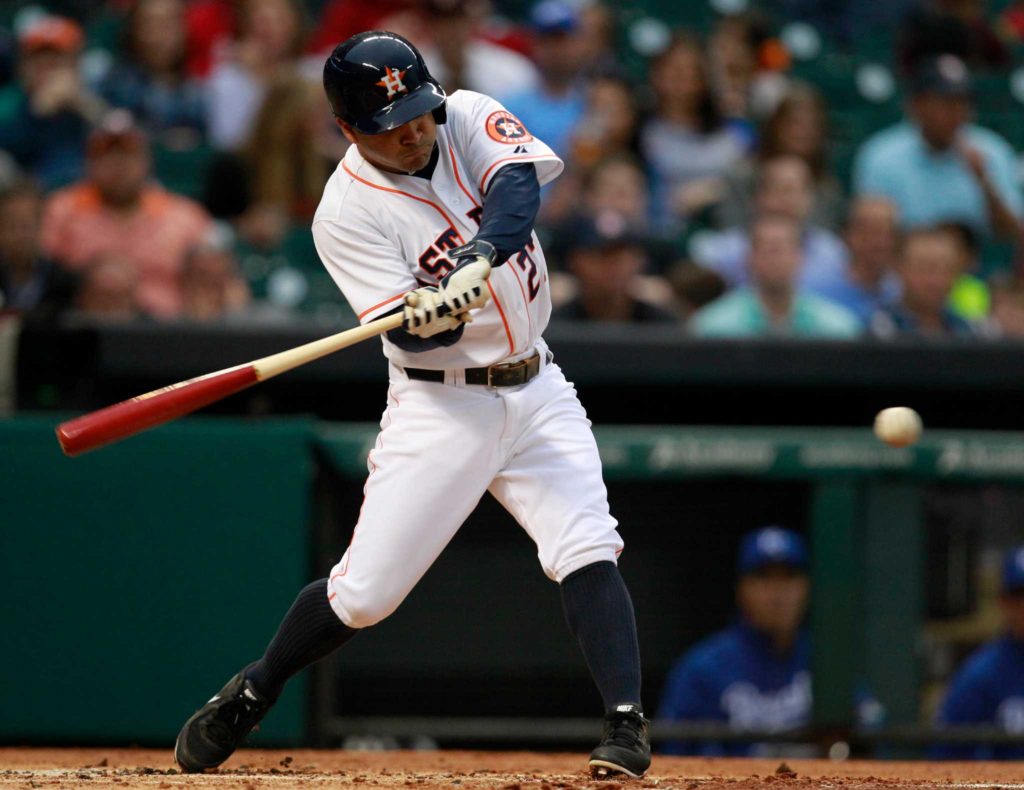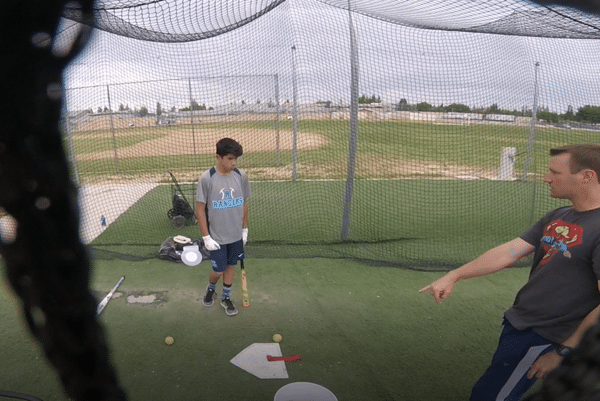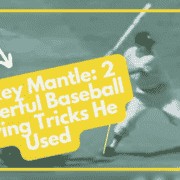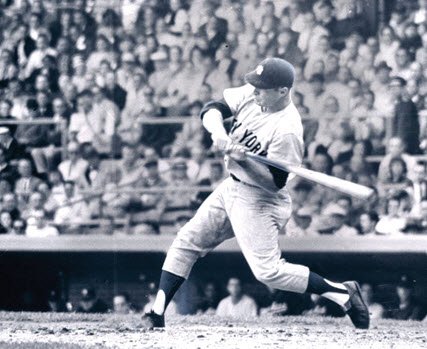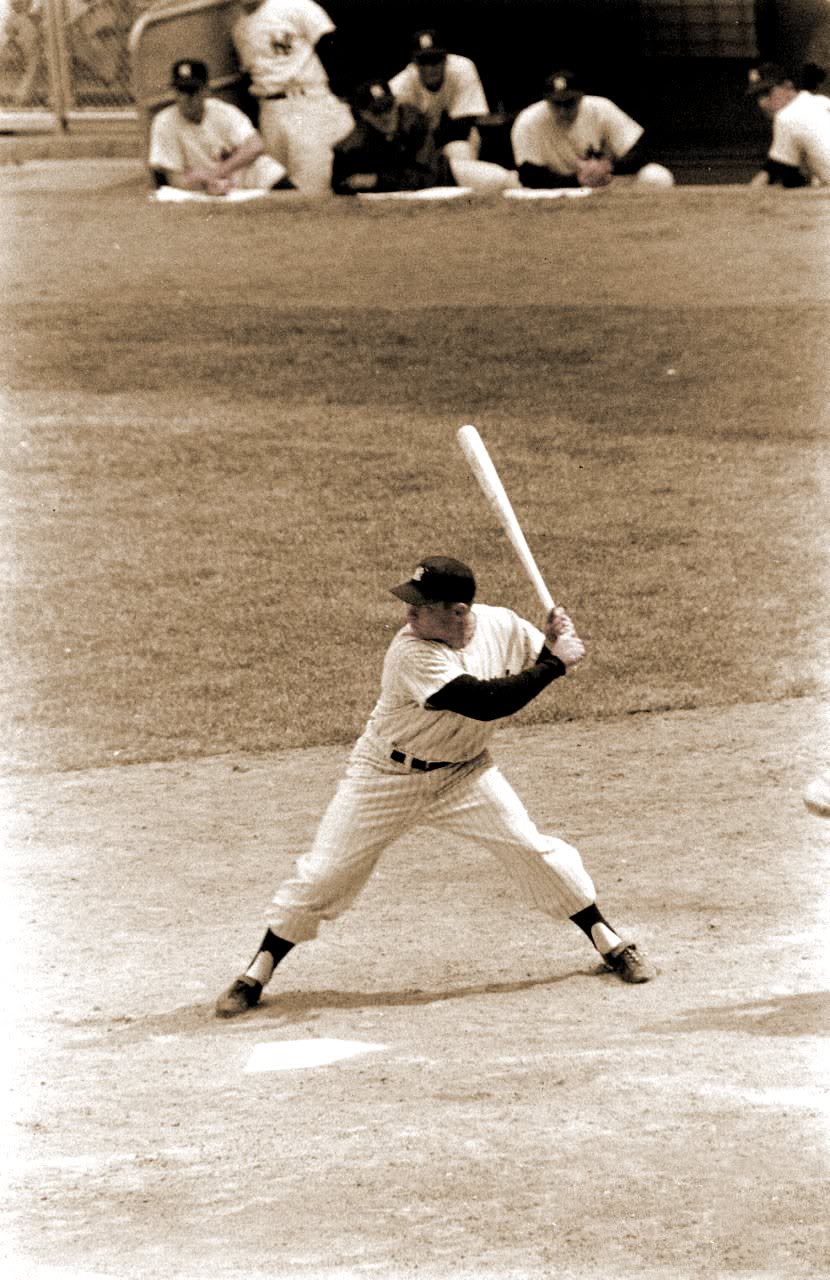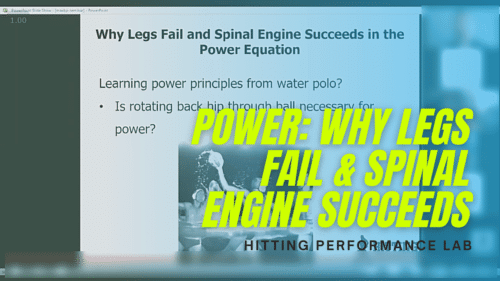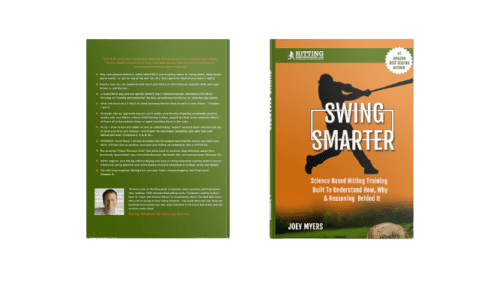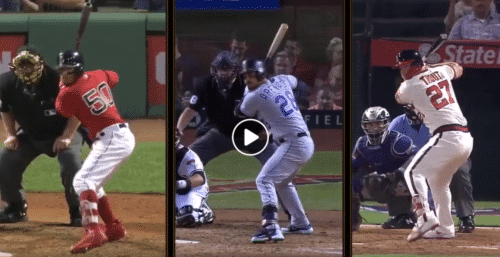How To Apply The “Precision” Golfing Principles To Baseball Hitting Fundamentals
In this baseball hitting fundamentals gold interview with Golf Pro Instructor Lee Comeaux, we go over:
- “You’re going to ruin low backs if you teach that!”
- “Golf is about accuracy. If you ain’t accurate, you’re not gonna play a good score”…
- “All of a sudden, I realized, turn your rib cage, and then boom…”
- “You got to understand how the fascia and these trains all play because there’s layers upon layers in the body”…
- Hitting for targets and areas on the barrel, and…
- How to apply the “precision” golfing principle to hitting.
CLICK HERE to download the baseball hitting fundamentals video transcription pdf. The following is the transcription in its entirety. And by the way, this is one of 24 expert interview in our brand NEW baseball hitting fundamentals book on Amazon: Swing Smarter … Enjoy!
BREAKING NEWS:
Grab two chapters of our NEW Amazon book FREE...
Joey Myers 00:00
Hello and welcome to the Swing Smarter Monthly Newsletter. This is your host Joey Myers from Hitting Performance Lab dot com and with me today is a good friend of mine and I didn’t really get to say his last name correctly. It threw me for a loop until David Shanklin, mutual friend of ours, it’s Comeaux, right? The last name?
Lee Comeaux 00:18
Yes, Comeaux.
Joey Myers 00:19
So, Lee Comeaux. For those of you who’ve read catapult loading system, which became an Amazon bestseller in the baseball hitting fundamentals niche in 2018, you will know Lee because Lee was in the book. He’s had a mentorship in my program namely the hollow position, we call that and the finger pressure. I was working on finger pressure, but I was a little bit off base and he really helped with that. So, welcome first, Lee, to the show.
Lee Comeaux 00:47
Thanks for having me. I hadn’t talked to you in a while.
Joey Myers 00:51
It’s been a while. It’s fitting that it’s right before Christmas.
Lee Comeaux 00:55
It is.
Joey Myers 00:57
First question, Lee. When we first met, you were really disgruntled with my system, you said “hey, you know you’re going to be hurting lower backs” and all this kind of stuff. I loved it and I’m one of those guys that if you can show me a better way, and then I’m all ears, and I was with you. Lee, for those of you who don’t know who he is, he is in the golfing world.
Joey Myers 01:20
He works with golfers internationally, he works with golfers of all time from professional, amateur, the whole thing. It’s interesting to get his perspective from the golfing world. Tell me just initially when you first came in and were like, you know what, this is really going to ruin backs and things like that. What brought you to that baseball hitting fundamentals decision? That observation?
Baseball Hitting Fundamentals: “You’re going to ruin low backs if you teach that!”
Lee Comeaux 01:40
Let me tell you the story how I got to anatomy trains, fascia, and things like that. I quit golf about 2000, every single move hurting and I had a lot of questions from my teachers. One of them was I tend to hit it with forehand a lot, right hand. Most instructors were usually lead arm, left arm. They changed me up, I just got tired of hurting, got tired of playing bad, I quit.
Lee Comeaux 02:07
My daughter, one night, let’s go the range, we go the range. I hadn’t hit balls in months or years even, I’m doing my thing, the next day she comes back, she said, “Dad, where’s the power come from?” Well, I really didn’t know.
Lee Comeaux 02:20
Long story short, kind of started over, I was like I’m gonna do it my way this time. I’m not going to go to instructor, I hadn’t played three to four years. Just started hitting balls in the range, just letting my right hand hit forehand shots, and before I looked up, I’m 10 buckets into it. I haven’t missed a shot, I feel great.
Lee Comeaux 02:43
What are these baseball hitting fundamentals things I’m feeling in my body? I started asking questions. My wife was a massage therapist, she just came home, and it was unbelievable. I went to the range, I took it back however I wanted, swung it down however I wanted, put one right where I wanted. I was feeling these things with my body, all she said was anatomy trains.
Lee Comeaux 03:06
You might as well say it in Chinese. Anatomy trains? Off I went! I found Tom Myers, anatomy trains, started to understand the fascia of the body. It really was how when we’re just sitting there and I’ll take my daughter, a daughter had a select career from 8u, all the way to 18u, .697 batting average. We kept it simple, the object was just to hit a ball. That’s it, not hit hard and in fact, when we would go to practice, talking about squeezing the last three. What I found was anatomy trains, I understood the arm lines, functional lines.
Lee Comeaux 03:48
I understood why when I grabbed a golf club, a bat, anything, for the last three, my hand is clenched. How my hand pivoted, how when we do simple tasks, paying attention to what your hand is doing, your grip. Not what does it look like, not in golf, is the beast point somewhere because all those things lead to how, it will lead to poor kinetics, it’ll lead to your brain and body being confused.
Lee Comeaux 04:22
The thing that blew me away was my back didn’t hurt, but also realize that first night how engaged my knees were, which you know and what you know now. Look how the functional lines attached in the knees, come up here and attach to the upper arm. We’re in golf, everybody’s teaching connection where when you learn that your functional lines attach on three sides of the humerus and they’ll connect about right here on the front, back and sides. It all starts making sense.
“Golf is about accuracy. If you ain’t accurate, you’re not gonna play a good score”
Lee Comeaux 04:51
Why my knees got involved was because it made my lumbar spine move around and time and space. Instead of me chunking hips around, and I’m never was a hip chunker, I was never one of those who bought into that theory. Golf is about accuracy. You had to be accurate, but powerful would be nice. If you ain’t accurate, you’re not gonna play a good score.
Lee Comeaux 05:15
When I played in college and professionally, accuracy was where it’s at. All of a sudden, I went from being sore and hurting to not hurting anymore because I was letting my body do things. It was wanting to do, not what that guy saw, what he saw, what he thought, I’m having results. I think of a shot and hit it, boom, there was.
Lee Comeaux 05:38
I think I’m gonna leave right there, in Texas we have crawfish holes, I’m going to hit it by a crawfish hole, about four feet, and have it stop right there and I’m like, whoa, never in my golf life that happened. Here I am at, I’m 52 now, this happened. Six, fourteen, thirty-eight and found anatomy trains, and was just started answering all these baseball hitting fundamentals questions of why things work. It also answered why things weren’t working in that, you can focus on things that are irrelevant and that really affects the way all this tissue operates.
Lee Comeaux 06:16
I’ve never heard in baseball, or golf. You never hear them talking about thoracic movement until you came along. It was always turning your shoulders, that’s great. They sit on top your thoracic that pivots, unbelievably, because that spiral line, but if you’re worried about throwing these joints around a rib cage, you’re going to struggle, you’re gonna fight it.
“All of a sudden, I realized, turn your rib cage, and then boom…”
Lee Comeaux 06:40
All of a sudden, I realized, turn your rib cage, and then boom, I just started looking. At 52 years old, I hit it further than I’ve ever hit in my life. Understand what thoracic pivot is, versus, I would never tell a student, turn your shoulders, turn your thoracic, because that’s what’s turning. As simple as that sounds, it is just it’s huge.
Lee Comeaux 07:01
Again, my daughter 697… .692 career, batting average. She went three years, she swung it for three years, whenever she pulled the trigger on the back move, she made contact, she averaged .954 percentile. When she swung the bat in a four-year period, she made contact, she may have found it, she might have popped louder, it didn’t matter.
Lee Comeaux 07:29
What we trained was, when this move, its job was to touch that ball. Confidence will teach you how to touch it harder and better, if that’s what you want, but what she found was you’re just going to want to hit it, you’re going to want to place it where they aren’t like Ichiro said. Same thing with her, it never hurt, never.
Lee Comeaux 07:37
It wasn’t until later in her career, in her college, D-1 career where they change things up, she started having back issues, but I knew that was going to happen because she knew that she had to do what they said. She also knew what they didn’t know, but we knew how to fix it. Thank God, through anatomy trains and things like that, you know how to fix it. I may want to leave it alone but that’s kind of the baseball hitting fundamentals backstory of how I got to that. Then, I saw you.
Lee Comeaux 08:18
I learned this in golf, come out in ’06-’07, talking about anatomy trains and fascia and pushing versus pulling and I was on a site called The Secret is in the Dirt, that Steve Elkington had. I look up one night and you look at all the hits on this website and if there were a million hits, 750,000 were my little thread.
Lee Comeaux 08:40
I’m some guy in Beaumont, just decided to pay attention to what was going on, to define some parameters or what I call good, listen to what my body was telling me, and then ask some questions, and my wife’s genius was anatomy trains. I look back and I’m glad that’s all she said, because she would have said anatomy trains and went into it real deep, I probably would have just walked away with “Yeah, I don’t care about all that”.
Lee Comeaux 09:07
Because it forced me for the first time ever, to research something I knew nothing about and you’re… I tell people this all the time, God gave you a gift called arm lines. It makes life so easy for human, for about four- or five-point human being. That’s why you can just throw, that’s why you can just swing and hit it. It’s when we get into the baseball hitting fundamentals of what does it do from the bottom of the feet.
Lee Comeaux 09:31
You’re not going to bat .692 in a 10-year span, you’re not going to not miss one or three years because you’re worried about you forced your motor cortex to worry about things that are irrelevant, none of that has anything to do with do this, other than the limbs are attached to it. That’s it. That’s why God gave you this and these, that’s it.
Lee Comeaux 09:53
You had no pelvis and hips and certainly Gracovetsky opens your eyes in his video is about the guy with no legs and how he was is able to propel himself, and when you get into the spinal engine, it’s like I tell people, especially in golf, the spine is such a focused-on thing. It’s probably focused on to a detriment, where it’s a curve, it’s an S, you’re going to slump some days, you’re going to be straight some days.
Lee Comeaux 10:23
Tiger showed us and a lot of these strike back golfers for sure. You look at the spinal injuries on tour, and it’s all from you not letting your spine. You got Nicklaus, who would always say, global flex. These are terms that weren’t around in 2006. Global flexion, local flexion, Hogan was a local flexing guy, it just wanted his arms around his waist, his hand, his hand path was around his pelvis. Make sense, so, this is where I was at years before where you got, and other people, and you’re seeing that more and more in sports.
Baseball Hitting Fundamentals: “You got to understand how the fascia and these trains all play because there’s layers upon layers in the body”
Lee Comeaux 10:59
You got to understand how the fascia and these trains all play because there’s layers upon layers in the body. While somebody listening to this may get a little bit as a parent, get nervous, but if you just leave it to pros and leave it to grip pressures, and you leave it to what’s my objective, all those other things do their job. Their job in hitting is to hit, you put this on the ball and how I taught her to do it because it tells me just like your brain tells you how to train anyone, mainly your kid.
Lee Comeaux 11:17
What we used to do was that here’s the deal, you’re going to get 100 looks tonight, you make 100 swings, wherever daddy throws it, you have to go put this bat on the ball. The minute you miss, we start over. If I threw it, if she had to jump and hit it, she had to jump and hit it, if she had to step over and hit it, I got her brain numb wrapped around what is the strike? I told her that ump you’re facing and how many times have we seen this?
Lee Comeaux 11:42
You got an ump calling strikes, here or at the ankles. We practiced in such a way that when the bat moved there was going to be a strike, whether you hit it or didn’t, you just initiated a strike. We just saw thousands upon thousands of not misses, and it got to where, but it became a game in the batting cage, I toss it or throw it harder, I thought it didn’t matter how I throw it behind my back. Her goal was no matter how it came at her, she was so focused on hitting it, so I throw it, top right corner, top left corner of the cage that’s got to where we would have to do that to kind of make it somewhat entertaining because she wasn’t missing.
Lee Comeaux 12:42
She was hitting it as hard as she wants then we got into it, barely hit it and hit, just to where it barely comes over my head, the batting cages and that what taught her all the anatomy trains in her body. It taught her control. How? What if you want to just bloop it up? What if you have one of those nights, you’re not feeling it and maybe all you need to do is get it out the outfield, and third base comes in and you win, I can’t tell you how many games she won like that.
Lee Comeaux 13:12
We did it and she did it successfully over and she got to where she could drop it into buckets, and we did it over and over. We had fun with it because the game was to hit just like the game is to throw the game has to catch. When that ends, she never hurt, that was pushing. I say pushing was the key to that, whenever we push, it’s very hard to hurt your back, whenever we pull, it’s doing what we have most of our injuries as a human.
Joey Myers 13:42
A couple things, and I love just listening to you talk and it goes into different baseball hitting fundamentals rabbit holes, you covered a lot of different things. Thing number one is swinging without pain. I just had last week, Monday, Tuesday, I had a gentleman come up from Ojai, California, which is down LA area and he came up 71 years old.
Joey Myers 14:07
He had contacted me over DM on Facebook and at first, I thought it was a hoax, and then he was legit. He’s like, “hey, what date? Tell me where to go? Give me the address.” He comes, 71 years old, we started swinging. He read my book, that was the thing, so he read my book, and then he’s like, “I love it, it makes sense”. He’s an attorney, international attorney.
Joey Myers 14:26
It made sense to him, a lot of the language he has read every book out there and a lot of people don’t know how to explain it. He comes we work on basically we call it neck pressure now. It’s the idea that the C and the T are creating tension, right that pressure. We took him from 51 miles an hour ball and speed off the tee, to 60 miles an hour within that first hour session.
Joey Myers 14:49
The one baseball hitting fundamentals thing when we talked about safety in the swing, was he took it he took a swing and he’s like, “oh my back” and I was like is it on the outside part of your back? Like your oblique, your external oblique? He said no, it’s the center and so I said, let’s do this, let’s do hollow.
Joey Myers 15:05
We call it the pinch, we take the belly button and the belt buckle, and we pinch those two points together, which is putting that flexion into the lower back and having swing and zero pain, no more pain. That’s number one, so maybe we could talk on that a little bit, but the other thing that you mentioned that I really love, that you gave me a huge idea back in the day, was you talked about Bustos, where she did a video where she had her bat, actually it was three tapes.
Lee Comeaux 15:31
It was somewhere blue, she had different videos, but the thing was pink. The one in her hitting where she hits the girl.
Joey Myers 15:40
Yes the target, so she had to hit, her girlfriend that was hitting with her was standing out, I think she was off the tee, she was standing out different places in the cage, and she’d have to not only hit the spot on the bat where she had taped there and I’ve done it in an ‘S’, I think maybe you had an answer something where there was like, maybe a half an inch, the actual tape itself, right?
Joey Myers 16:02
She hit it on one part of the tape, it could be this. the number one, number two or number three, and she had to hit their target that was out there, which was her buddy that she ended up hitting on her right back butt cheek and made it really hurt. But this idea that you talk about, that you don’t hear anybody talk about this, is hitting on a certain part of the barrel and hit a target, and you were saying with Goose is, it’s either hit it up there, hit it over there, it’s hit it in different spots, but also hit the part of the barrel. Those are two baseball hitting fundamentals things, both the safety of the swing that I’ve really learned from you and then the idea of changing targets and changing spots on the barrel.
Hitting for targets and areas on the barrel
Lee Comeaux 16:44
Correct. This is a manmade bat and a bat I’ve always preferred because of the way it’s made, and it has a lot of inertial value in it, but you take the measurements of the tool you’re using, you measure three quarters the length from the in you’re holding in this sweet spot right there. It’s a mathematical…it’s called center percussions. Now, where I started with her was, as I would put that, I made her start at the ball and go, with no wind up.
Lee Comeaux 17:24
For the people listening, you go to McKenzie Comeaux, M-A-C-K-E-N-Z-I-E Comeaux, C-O-M-E-A-U-X, she has a YouTube, 77 videos. There’s some of her hitting, but the main thing was, we start from here, we’re not ready to play, the minute we go, this thing lists tension, this about integrity of tension we need, we go, then it’s allowed. The same thing is when this lifts, that area lifts we go, and if I tell you, you’re about right here, and I tell you go left, you bet you got to be able to control this and go there.
Lee Comeaux 18:00
What it told her was, because when you’re in a game, you see the hole and you see the guy look at the pros, they’ll submit, the play offset…If you taught someone how to hit like that, and they shifted on you, and they left field wide open, you own them. Now, we got into what side of the ball to hit it, the left field wasn’t turned fast to hit a left field hit the outside quadrant, and that was just the deflection angle. That’s kind of where we went with it.
Lee Comeaux 18:34
It was a true game changer, and your anatomy trains. What I tell people is human bodies learn how much effort to put in something. It can go all out; McKenzie could lay a bunt this far off the plate every time. That’s controlling, that’s catching the ball with the bat, you want to catch it and drop, just take the inertia in and drop it.
Lee Comeaux 19:06
It’s actually fun when you do it, when you take the time to learn to do it, it’s just like golf. How to hit a fat chip on a fast green downhill because that’s the only shot you got. I see amateurs trying to spin it and they got no chip, no matter how much you spent, you got no chip, you should have fatted it, get it barely rolling, let the ground do the rest.
Lee Comeaux 19:27
That was kind of how we treated and she’s taking up golf so she’s really getting my analogies now because she’s gotten into golf at 19 but that’s anatomy trains, that’s the animal in the forest stalking that’s gotta turn it on. That’s human, humans got the same thing. We have been so joint focus for 200 years, structural focused. It’s just like tell people there’s a lining around the button, this is simple, there’s a lining sack around the bone that allows this arm. This looks goofy, but there are no biomechanical descriptions for that. They don’t know how that happens, if you ask somebody in biomechanics, what makes that go in those directions? They don’t know. Well, it’s that tissue, its fascia, it’s your ability to just think it and do it. That’s the beauty of it.
Joey Myers 20:21
What I love about what you bring to this, from the golf world, is precision, right? We’re talking about an industry, as you know, this baseball hitting fundamentals industry, baseball softball was more so baseball, but softball too, is this idea of hit the back, top third part of the cage, launch angles long, hit it hard, launch angles, launching and launching. It’s this push for aggressive swings all the time, where I think is lacking is the precision side and that’s where you come in.
BREAKING NEWS:
Grab two chapters of our NEW Amazon book FREE...
How to apply the “precision” golfing principle to hitting
Lee Comeaux 20:49
Here’s a challenge for everybody listening and follows you. I used to tell McKenzie, how easy can we swing at it? What you come to realize is the moment of contact between the two, when this bat touches the ball, like in golf, I told her, the moment I felt the ball touch the face, I could accelerate. That was something I always had and it’s just for that little bitty golf ball distance, same thing with a softball or baseball, but how easy can we go and still get this out the park? What was the bottom limit? What was the top limit?
Lee Comeaux 21:00
She learned some things like I’ve shared with you 45-degree launch angles, you can go very very slow, but if you have a 45 degree launch angle, that’s optimal projectile distance. All of a sudden, I don’t only remember bat speed, but just say, she could probably at about 35 miles an hour at the right launch angle, get it out the park, which isn’t a whole lot of bat speed, but you can’t quit on the hit, you got to drive, you got to create the inertia to get the ball out.
Lee Comeaux 22:02
She started understanding the differences. We’ve all hit a hard ball versus kind of hit a ball, it’s fast and quick, and it just had nothing. You see a lot of kids that make this contact the ball just kind of fizzes off of there. You put them on video, it looks like they just nailed the center of it, but then what happens is they kind of let go the grip pressure, they let go… they think it’s over with because they practice so hard to quit it at impact.
Lee Comeaux 22:04
We practice, that’s why I started impact through impact through, punch it, it’s what you do. Once you make contact, all the damage is done by keeping going catapult system, the catapult has got to keep, the catapult doesn’t quit. That thing is the slings or the ball way past the mechanical point. The cable still has it, once it all the way stretches forward, it launches it, it doesn’t let go when it passes the two prongs.
Lee Comeaux 22:59
It’s all about getting all the energy out and inertia out, that’s kind of how the anatomy trains, that’s how you save your back. It’s like I tell people, I hear it all the time, turn your hips, all your pelvis is doing is taking your lumbar spine. This is the back of my lumbar spine where your pelvis moves, and it just rotate. It’s what gives your lumbar spine move 45 degrees, because it only has one degree of motion.
Lee Comeaux 23:28
If I want my lumbar spine to look that way, my pelvis will move that way. It has nothing to do with power, it has everything to do with safe lumbar movement to have a lot of what looks like motion because the more motion you have, the better you are. You have to open up areas of joints and able to move through the joint, where golf dynamic x, where we’re trying to hold our pelvis still. Can I do that? Sure. That’s really on the short shot.
Lee Comeaux 24:02
I’m just trying to get it through the outfield… I tell people, everything we do is a catapult system, optimum human performance is a catapult system. No matter, we’re fishing, if we’re tennis’ing, whatever we’re doing, we’re trying to move an object with a stick or something outside of us. Here’s a term I’ll never hear but what I call it the right-angle feet.
Lee Comeaux 24:32
Right foot like this, left foot is going to be like that and it can be anywhere. Golf is no different. When I’m playing good golf, my right foot square, my left foot, flair it out. Here’s why, the minute you do this, the minute your footsteps. If you hit against a spine with feet like this and pelvis like this and hips like this, all the tension from all these diagonals changing, your ipsilateral is all going right to your lumbar.
Lee Comeaux 25:00
For all of you listening and go home tonight, open this foot up, and then turn. You take all the pressure off one side of your back, bye bye back pressure. If I go bye bye back pressure, guess what I have a spinal engine telling me how much do you want? How much can I give you? Your only limit?
Lee Comeaux 25:21
I’m asked, where does the power come from? I’ll give you a minute to say it or think it. The answer is simple, it’s your glands, your adrenals. All these glands you have a release this energy, that’s the days when I as a golfer or me as any athlete or anything, no matter what I’m doing, I have optimum power management and optimum power results for the given baseball hitting fundamentals situation.
Lee Comeaux 25:56
You can work out until the cows come home, but if those things are not moved, fluid moving and again, that’s why we curve the spine. The things I learned, when the spine curves, we hit certain buttons that help certain glands activate for us to be our best us. Our job is to learn how to, “I want to hit it out the park, but I really need to get this just over the second baseman or just out to the infield, because I need to score the guy on third, so we win the game”,
Lee Comeaux 26:24
I take the chance of hitting out of the park striking out, and that’s what my daughter got good at sending it on the ground, we practice trying to hit it and skip it off the earth as hard as possible. You know how many times she skipped it over second baseman head because she just practice beating up or over the pitcher’s head.
Lee Comeaux 26:44
You run out of things to do when all you’re worried about is making contact, we learn all these ways to control the contact to get a result, to get on base, to either score someone. We learned, we practice how to fly out to the right and left field to score somebody on third hit a deep, everybody thought, Oh, she flew out, but to her, I score the guy on third, or the lady on third. That was her job.
Lee Comeaux 27:08
That’s where you go with this once you learn, once you’re pain free, and once you can focus. You’re not worrying about these things you’re not worried about; I sit down for the next day. We never iced down. We got to have fun. We got to have a career that’s legendary around here.
Joey Myers 27:31
Yes, it was unbelievable. We talked about this idea of people, they are used to hitting .300, .400. They’re not used to hitting .600, .700, .800, right and one thing that came to mind when you’re talking about the lower back taking pressure off by taking that front foot and opening it up a little bit, is think about when at a bar, you have that barstool, you have the barstool, and then you have the little bar at the bottom for the foot. That was meant so that when you got your arms up on the bar, and these guys been there for hours drinking, talking, singing, and you’re standing for lengths of time with your feet like this, that little bar at the bottom there is for you to pick your foot up, put it down, and most of the time, it’s in that position.
Joey Myers 28:14
Another baseball hitting fundamentals scenario is you’re lying on the couch, watching TV, where you’re laying back, not laying, laying kind of prop down. You have both legs straight out this way, what you do when you start to feel your back getting tight, is you’ll bend the knee, and you’ll shift out this way and one side, you’ll bend the knee and go out the other way to take the valgus knee.
How to take pressure off the low back by flaring front toe out
Lee Comeaux 28:35
It’s because the bottom of your feet, now you get in the deep backline which starts right here on the forehead runs on top of your head, the bottom your feet. This is where people go, I get where people in golf were doing the spine and doing alignment squared because it’s based off of the deep backline.
Lee Comeaux 28:52
These are all things that God gave us as a gift to perform best but also to fix ourselves when we do ache and we do have pain. It’s just like my daughter came to me one day, I don’t know how long into this and she goes “Your femur head”. I’m like, “What do you mean your femur head?” I told her, your femur head is the reason your front foot is open, you got your femur head sitting here and you’re sitting here just like that, the pelvis and also one day you’re going to feel the same kind of slide move.
Lee Comeaux 29:24
What’s happening is people throwing their pelvis and hips are kind of all these femurs are getting. Everything’s getting all torn up. That’s when Nicklaus repaired his hip, that’s where people have bad hip injuries, or their hips get worn out because they’re trying to spin them and they’re getting all mangled and all sudden one day you feel it slide.
Lee Comeaux 29:43
I’m on the range one day, I felt mine, it’s a bulge, I get up pivoted around this joint, but that foot being that way, leave the pressure to where this thing can move and the ligaments around your femur head are probably the strongest you got, things just start. She went, I get it. I said, you get it now. And she’s like, yeah.
Lee Comeaux 30:08
Again, it’s because she was actually daydreaming once, she was at batting practice. She got bored of what to think about. She still felt it, there you have it. She was hurting a little bit. She had been at that point, I think some of the college coaches were trying to get her to do the hang back, throw it all out the last second. Whatever that means.
Joey Myers 30:33
Crazy.
Lee Comeaux 30:34
It’s like reverse catapult hit the brakes, work your ass off to go nowhere to get it. You went from barely swinging and hitting over the fence, to now you got to give it, you got to go work out just to get to the fence.
Joey Myers 30:50
It’s baseball hitting fundamentals with the emergency brake on.
Lee Comeaux 30:52
Very well put, it’s hitting in park. I like that.
Joey Myers 30:58
I know we can we can talk all day and I would love to listen to you all day, but I want to be respectful of your time. I got a hard stop here in a couple minutes, but I wanted to ask you, if there’s anywhere that you want people to go to find out a little bit more information on you, maybe there’s some people that will see this that are golfers that maybe want to look.
Lee Comeaux 31:16
If you can google me “Lee Comeaux golf” and I’ve got a basic little video on YouTube, now called “Making the Divot”. For golf, you got to keep the symbol just aim your divot, because it’s an aiming sport for what you do.
Lee Comeaux 31:35
The good thing is you don’t have to be an aimer, you can start keeping the lines and to be a .600 plus hitter, you start focusing on exact spots, and the Ichiros of the world, that’s what they did. That’s why they had the hits they had, and that’s who they were, and that’s the same people that come here.
Lee Comeaux 31:53
That’s what they all want to be. We all think we want to be the Barry Bonds with the homerun record, we really want to be an Ichiro with a long career. How many pitchers do you think, just when he came up, they’re like, I got no clue how to get about this guy? That’s what you want to be.
Joey Myers 32:12
The idea of them striking Ichiro out or even getting them out, didn’t even enter their mind, it was to minimize the damage or to get him to go someplace that they didn’t want him to go.
Lee Comeaux 32:25
Ichiro was a pure fascia. He said it a lot. You have to have soft muscle and you get that once you realize what soft muscle is, and when the fascia melts, and all this stuff is working in your favor, and you see it on high speed all the time, you will see the tissue in the arm just flapping around.
Lee Comeaux 32:45
That’s us in our best, that is always a high-end athlete you see it in and that’s why he had a cannon like he had. That’s why the guy could run this fast, this dude performed at a high-level catching, throwing and hitting. If you look at the complete package, and why because the guy obeyed his anatomy trains, he kept these squeezed.
Lee Comeaux 33:09
It’s the same thing I feed to my daughter, when you squeeze these three, the same thing happens to your feet and we become a supple leopard, like a lot of people talk about in… the older gentleman came to you and he learned it’s about, there’s so many blocks we put in our way because the way we just stand there really, and I like what you’re talking about with the head.
Joey Myers 33:35
Neck pressure.
Lee Comeaux 33:37
Golf is one where you see it in an opposite where they’re looking, a lot of people turn their head this way, so they go in a lot. What that is, is because their thoracic is trying to make the biggest motion possible and all the tissue connects around the head. If I turn this it allows me more, it allows me to turn my thoracic. That’s all it is.
Lee Comeaux 33:57
Unfortunately, it gets very confusing if you want to go this way. I’m more of a guy this way because I know I’m playing that’s where I’m going, I understand all this and I want a compact golf swing, so I turn mine this way and keeps it. It’s no different than baseball.
Joey Myers 34:14
Absolutely.
Lee Comeaux 34:17
I appreciate your time, I appreciate it.
Joey Myers 34:21
I love listening to you talk baseball hitting fundamentals, and I always learn something new. Tell Mackenzie AKA Goose, tell her we missed her and Merry Christmas to you guys out there in Texas and think about us in California because we need all the help we can get with our Governor.
Lee Comeaux 34:35
Big fan. I wish you the best of 2021, keep doing what you’re doing, I told you this a long time ago, your days are coming where you’re going to be the guy, they’re all going to be chasing you. Have a great Christmas, my friend.
Joey Myers 34:49
Thanks, brother. Keep up the good work yourself.
BREAKING NEWS:
Grab two chapters of our NEW Amazon book FREE...
, I wanted to use the Scientific Method to analyze if the baseball swing mechanics “squishing/squashing the bug”, during the turn, increases or decreases bat speed. The term “squishing the bug” means rotating the back foot, on the ground, during the turn. Like you’re squishing a bug.
, he talks about a cotton candy like springy material that the bones and muscles float it, and what gives muscles their shape called fascia.
,
,


